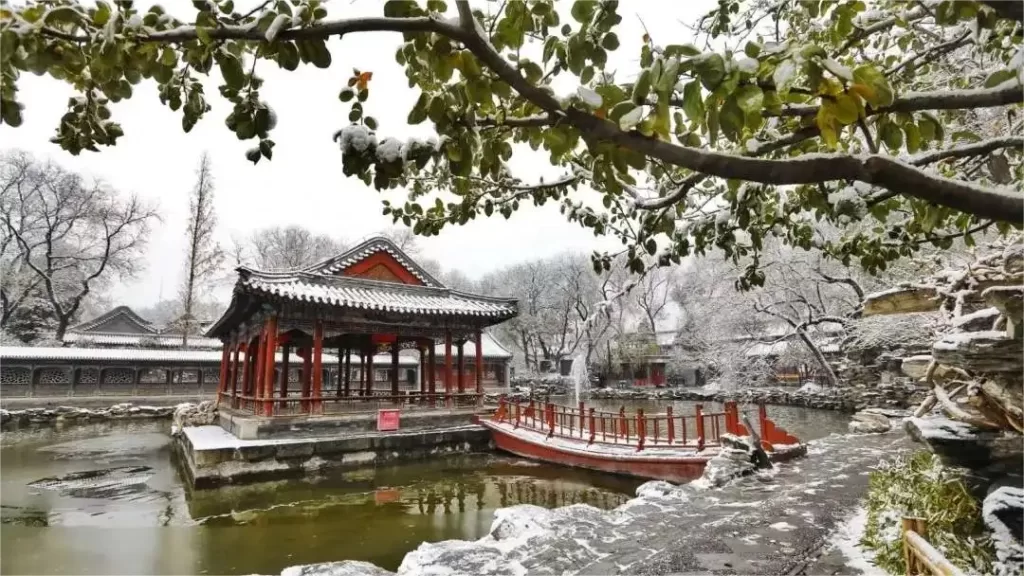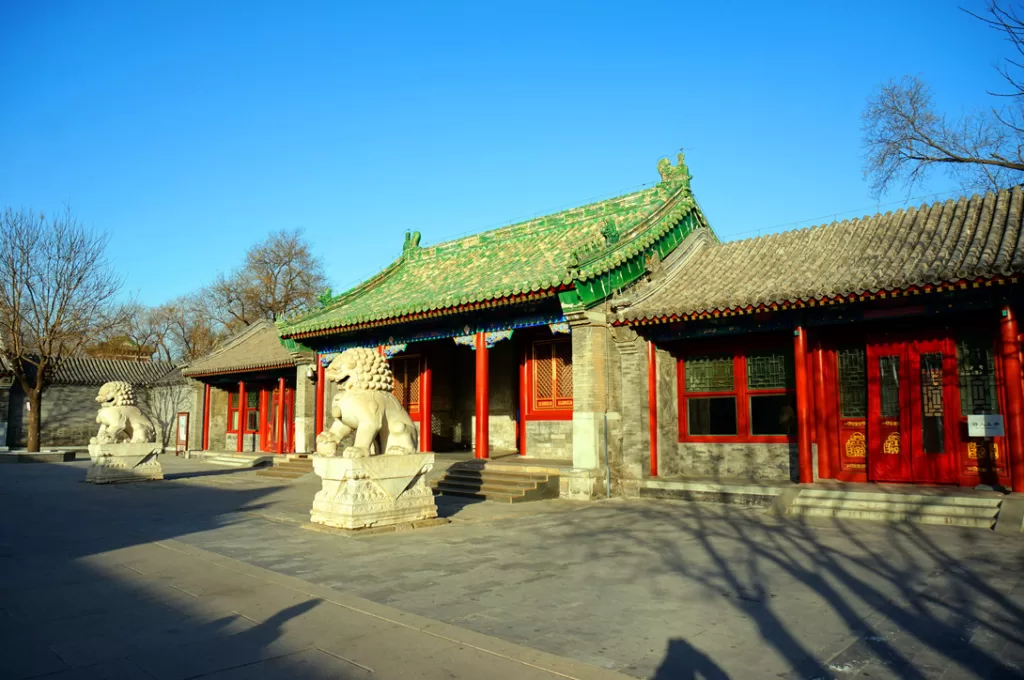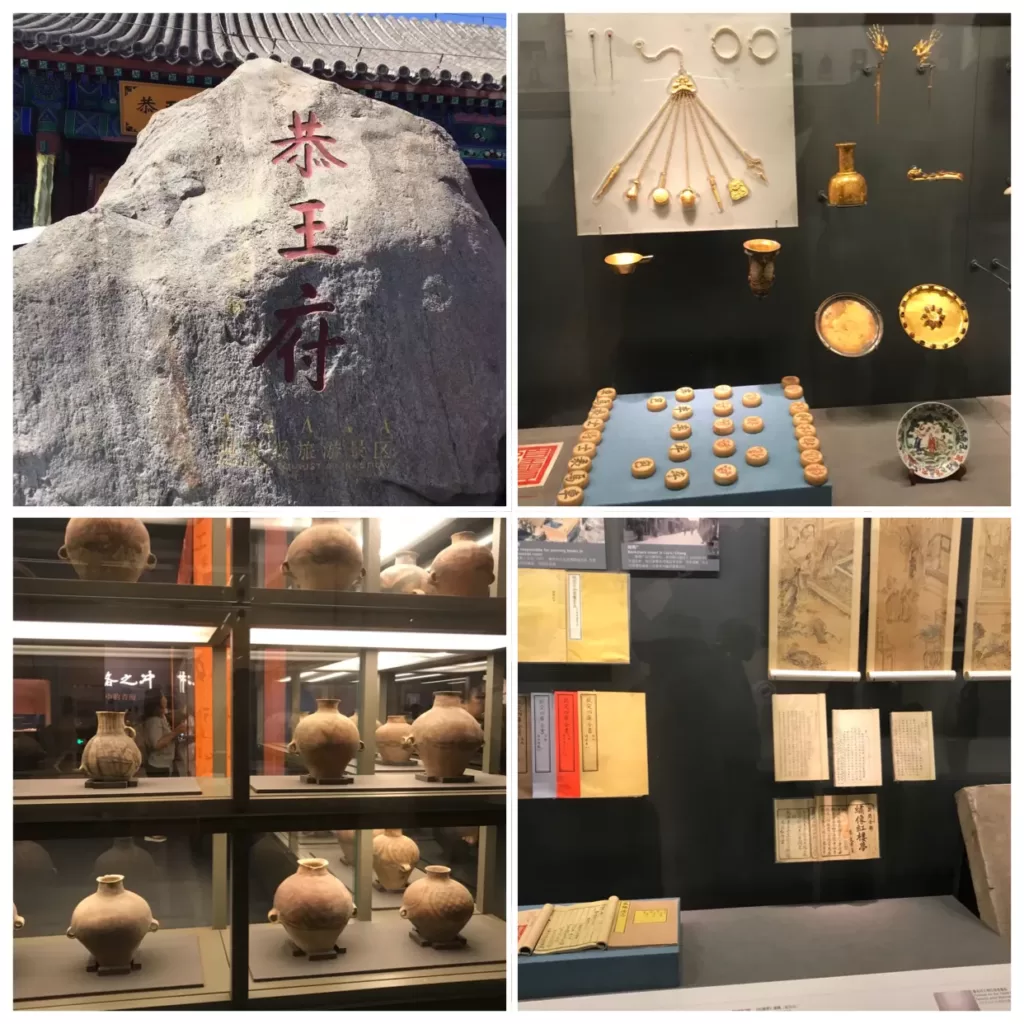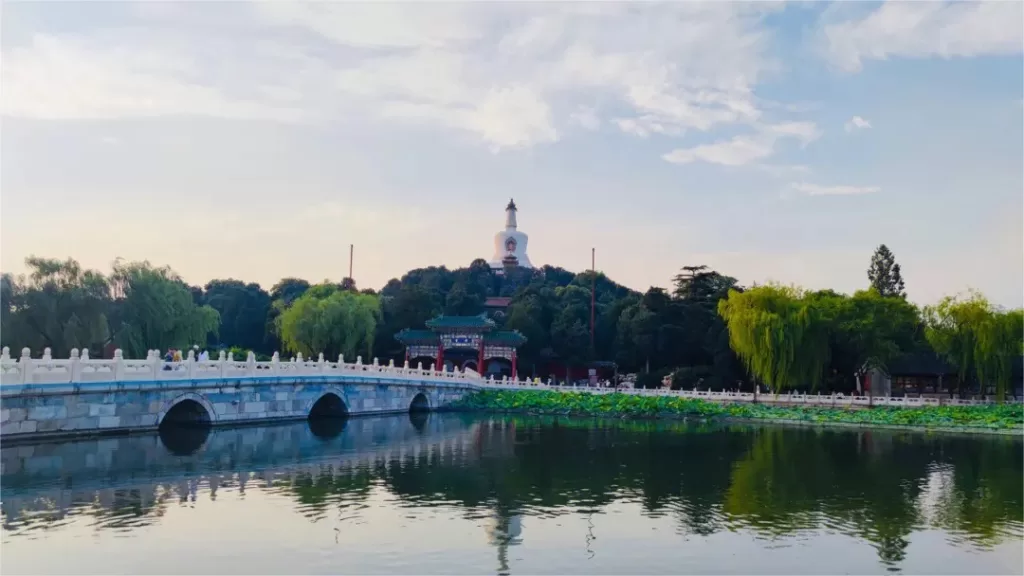Mansão do Príncipe Gong - Bilhete, horário de abertura, destaques e dicas


Prince Gong Mansion, also known as Prince Kung’s Mansion (恭王府 gong wang fu), is a historic mansion located in the Xicheng District of Beijing, China. It was originally built in the 18th century as a private residence for He Shen, a powerful official during the Qing dynasty. However, in 1851, the mansion was acquired by Prince Gong, the younger brother of the Xianfeng Emperor, who extensively renovated and expanded it into the grand complex that it is today.
The mansion covers an area of over 60,000 square meters and is divided into two main sections: the formal section and the living quarters. The formal section contains numerous halls and pavilions that were used for official ceremonies and important meetings. The living quarters, on the other hand, were where the prince and his family lived and entertained guests.
The architecture of the mansion is a blend of traditional Chinese and Western styles, with intricate carvings, colorful murals, and beautifully landscaped gardens. Some of the highlights of the mansion include the grand entrance gate, the Hall of Joyful Longevity, the Western-style ballroom, and the stunning artificial lake.
Índice
- Informações básicas
- Transporte e localização
- Highlights of Prince Gong’s Mansion
- Vlog about Prince Gong’s Mansion
- Dicas úteis resumidas a partir de comentários
- Attractions near Prince Gong Mansion
Informações básicas
| Sítio Web | https://www.pgm.org.cn/ |
| Duração estimada da excursão | 1 - 3 horas |
| Preço do bilhete | Adulto: 40 RMB Senior citizens over 60 years old and adolescents between 6 and 18: 20 RMB Crianças com menos de 6 anos de idade ou com menos de 1,2 metros: livre |
| Horário de funcionamento | 8.30 – 17.00; Last admission: 16.10 Fechado às segundas-feiras |
| Número de telefone | 0086-010-83288149 |
Transporte e localização
Prince Gong Mansion is located at No. 17, Qianhai West Street, Xicheng District, Beijing, China. It is in the heart of old Beijing, close to several other historical landmarks and attractions, such as Houhai Lake, Beihai Park, and the Forbidden City.
The mansion is surrounded by a beautiful and peaceful neighborhood, which provides a stark contrast to the bustling and chaotic modern city that Beijing has become. The streets around the mansion are narrow and winding, lined with traditional Chinese courtyard houses and old trees. There are also several small shops and restaurants in the area that offer a taste of local Beijing cuisine.
Autocarro: Take bus No. 3, 4, 13, 42, 107, 111, 118, or 612, get off at Beihai Beimen Stop (North Gate of Beihai Park), walk about 600 meters to the northwest to reach the entrance of the mansion.
Metro: Take subway line 6, get off at Beihaibei Station (North to Beihai Park), get out of the station from exit B, walk along Longtoujing Alley (龙头井街) for about 300 meters to reach the entrance.
Highlights of Prince Gong’s Mansion
Grand Entrance Gate

The Grand Entrance Gate of Prince Gong’s Mansion is a magnificent structure, which is over 100 years old and is decorated with intricate carvings and painted in bright colors, making it an impressive sight. The gate has a large central archway, flanked by two smaller archways on either side. The roof is adorned with traditional Chinese tiles, and there are several ornate lanterns hanging from the eaves. The gate is an excellent example of traditional Chinese architecture and sets the tone for the grandeur and elegance of the rest of the mansion.
Hall of Joyful Longevity

The Hall of Joyful Longevity, also known as Leshou Tang, was built during Prince Gong’s renovations and served as his main living quarters. The hall is an example of traditional Chinese architecture and is adorned with intricate carvings, colorful paintings, and elegant furnishings. It is considered one of the most beautiful and well-preserved structures in the mansion, and is a popular attraction for visitors to Beijing who are interested in Chinese history and culture.
Western-Style Theater

The western-style Theater in Prince Gong’s Mansion is a grand and luxurious space with an area of approximately 500 square meters. It is located on the second floor of the mansion and features intricate and ornate decorations, including crystal chandeliers, gold leaf carvings, and hand-painted murals. The spacious dance floor is made of polished wood and is surrounded by a raised platform with comfortable seating for guests. The room also has large windows that allow natural light to enter and provide a stunning view of the mansion’s garden. The western-style ballroom was used for hosting grand events and royal gatherings and remains a magnificent example of the fusion of Chinese and western architectural styles.
Courtyard Gardens

The courtyard gardens in Prince Gong’s Mansion are a beautiful and tranquil oasis located in the heart of Beijing. They are divided into four main sections, each featuring unique and carefully crafted landscapes. The gardens are designed in a classical Chinese style and incorporate elements of nature such as rock formations, water features, and lush greenery. They are also home to many rare and exotic plants, making them a popular destination for botanists and nature enthusiasts. The courtyards are connected by winding paths and bridges, creating a sense of serenity and harmony.
Art and Artifact Collections

Prince Gong’s Mansion boasts an extensive and impressive collection of art and artifacts that reflect the rich cultural heritage of China, including jade carvings, porcelain vases, bronze statues, calligraphy and paintings from the Qing Dynasty. The mansion also houses many rare books and documents, including historical records and literary works. Many of these items were collected by Prince Gong himself and reflect his love for the arts and his commitment to preserving Chinese culture.
Vlog about Prince Gong’s Mansion
Dicas úteis resumidas a partir de comentários
Notice the Details: Keep an eye out for intricate details like the 9999 bat motifs in the Prince Gong’s Mansion, symbolizing good fortune. Take your time to observe the surroundings as you explore.
Avoid Weekends: Prince Gong’s Mansion can get extremely crowded on weekends. If possible, plan your visit on a weekday to avoid the crowds. If you must go on a weekend, aim to arrive before 9:00 AM when the area is less crowded.
Explore Gong Wang Fu: One highlight of Prince Gong’s Mansion is the Xijin Room, made of precious Nanmu wood. Each Nanmu wood beam costs around 2.7 billion yuan, emitting a refreshing fragrance. Take your time to appreciate the craftsmanship and history of this valuable structure.
Utilize Audio Guides: Consider renting an audio guide for your visit. These guides are quite useful, providing automatic explanations as you reach each point of interest. However, be prepared for occasional technical issues or bugs. If the audio guide doesn’t work initially, try walking around the area to trigger it.
Attractions near Prince Gong Mansion

Parque Beihai - um dos parques imperiais mais bem preservados

Shichahai - três lagos interligados - Qianhai, Houhai e Xihai

Houhai Bar Street - um destino popular de vida nocturna